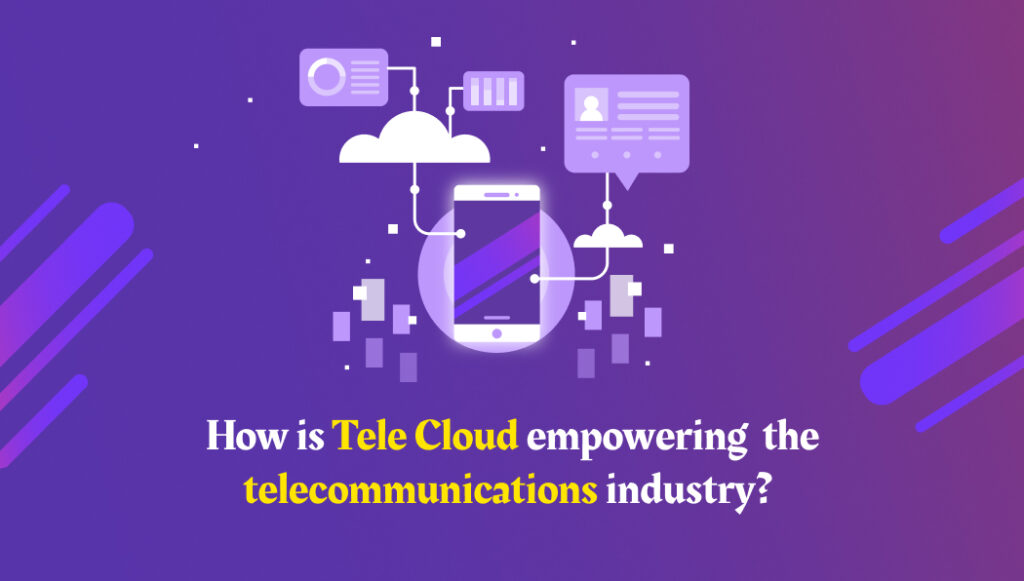The telecommunications industry is currently undergoing a profound transformation, due to the advent of Telco Cloud. This innovative technology, which merges cloud computing capabilities with telecommunication expertise, is reshaping the way communication service providers (CSPs) deliver their services. In this article, we will delve into the intricacies of Telco Cloud, exploring its core components, benefits, and its pivotal role in shaping the future of the telecommunications landscape.
Telco Cloud:
Telco Cloud represents a highly specialized cloud Networking & Computing environment that has been meticulously designed to address the unique demands of the telecommunications industry. It offers CSPs a flexible and scalable infrastructure that seamlessly combines the advantages of cloud computing with the deep-rooted networking and communication expertise found within traditional telecommunications systems.
Network Function Virtualization (NFV):
At the core of Telco Cloud lies Network Function Virtualization (NFV), a critical component that focuses on the virtualization of network functions. NFV involves the decoupling of essential network functions, such as routing, load balancing, and firewalls, from proprietary hardware. By achieving this virtualization, CSPs can dynamically scale their network resources, rapidly deploy services, and achieve higher operational efficiency.
Software-Defined Networking (SDN):
Complementing NFV is Software-Defined Networking (SDN), which provides centralized control and management of network infrastructure. SDN effectively separates the control plane from the data plane, enabling CSPs to programmatically configure and optimize network resources, significantly enhancing network performance and streamlining operational processes.
Orchestration and Automation:
Telco Cloud harnesses the power of orchestration and automation technologies to streamline service provisioning and management. Orchestration involves the coordination of various network functions and services, ensuring seamless and efficient service delivery. Automation, on the other hand, leverages software tools to automate repetitive tasks, thereby reducing the occurrence of manual errors and facilitating the rapid deployment of services.
Virtual Network Function (VNF):
Virtual Network Functions (VNFs) are software-based instances of network functions that run on virtualized infrastructure. These VNFs effectively replace traditional hardware appliances, granting CSPs the flexibility to dynamically scale and manage network services. With VNFs, services can be easily deployed, scaled, and migrated, resulting in greater agility and substantial cost savings.
Multi-access Edge Computing (MEC):
Multi-access Edge Computing (MEC) is a game-changing paradigm that brings computing resources closer to the network edge. By hosting services in close proximity to end-users, MEC significantly reduces latency, enhances user experience, and supports real-time applications such as augmented reality, autonomous vehicles, and Internet of Things (IoT) devices.
Reference Architecture
Telco cloud architecture reference is a framework that outlines the design principles, guidelines, and best practices for building cloud-based telecommunication networks. It serves as a blueprint for telecommunication service providers seeking to modernize their infrastructure and services by leveraging cloud computing technologies. The reference architecture is designed to address the specific requirements and challenges faced by the telecommunications industry, including high availability, scalability, security, and low-latency communication.
Benefits of Telco Cloud:
1. Agility and Scalability.
2. Cost Optimization.
3. Service Innovation:-
Telco Cloud provides CSPs with a flexible and robust platform for service innovation. By leveraging the power of virtualization and automation, CSPs can accelerate the development and deployment of new services, experiment with innovative business models, and effectively address emerging technologies such as 5G, IoT.
4. Rapid Time-to-Market:-
Telco Cloud significantly reduces the time it takes to bring new services to market. With the ability to rapidly deploy and scale services, CSPs can seize emerging opportunities and respond quickly to customer demands. The agility and flexibility of Telco Cloud enable CSPs to stay competitive in a fast-paced industry, ensuring they can deliver innovative services ahead of their competitors.
5. Security and Compliance:-
Telco Cloud places a strong emphasis on security and compliance. As CSPs handle sensitive customer data and communications, robust security measures are essential to protect against potential threats. Telco Cloud provides advanced security features such as encryption, access controls, and monitoring tools to safeguard data privacy and meet regulatory requirements.
6. Network Slicing:-
Telco Cloud introduces the concept of network slicing, which involves partitioning the network infrastructure into multiple virtual networks. Each network slice is customized to meet specific requirements, such as bandwidth, latency, and security, catering to the diverse needs of different applications and user groups. Network slicing allows CSPs to efficiently utilize resources, optimize service delivery, and offer tailored solutions to customers, promoting a more personalized and flexible experience.
7. Hybrid and Multi-Cloud Deployments:-
Telco Cloud enables CSPs to adopt hybrid and multi-cloud strategies, allowing them to leverage the benefits of both public and private clouds. CSPs can use public cloud services for specific workloads or services while retaining control over sensitive data and critical operations in their private cloud infrastructure. This hybrid approach offers the flexibility to optimize costs, scale resources, and ensure compliance with data regulations.
8. Intelligent Network Analytics.
9. Carrier-Grade Reliability:-
Telco Cloud infrastructure is designed to meet carrier-grade reliability standards, ensuring high availability and fault tolerance. CSPs can leverage the resilience and redundancy features of Telco Cloud to provide uninterrupted services to their customers, even in the event of hardware failures or network outages. Carrier-grade reliability is crucial for mission-critical applications, such as emergency communications, healthcare systems, and financial transactions.
Key Differences between Telco Cloud and IT Cloud:
Conclusion:
Telco Cloud represents a transformative technology that is reshaping the telecommunications industry. With its emphasis on virtualization, automation, and software-defined networking, Telco Cloud enables CSPs to deliver services with enhanced agility, scalability, and cost-efficiency. By embracing Telco Cloud, CSPs can stay ahead of the curve, innovate rapidly, and provide superior services to meet the evolving needs of their customers.
Telco Cloud represents a paradigm shift in the telecommunications industry, empowering CSPs to deliver services with unprecedented agility, scalability, and innovation. Through the virtualization of network functions, software-defined networking, and automation, Telco Cloud enables CSPs to optimize resource utilization, enhance service quality, and monetize new offerings. With the continuous evolution of Telco Cloud technologies, CSPs are well-positioned to capitalize on emerging trends and technologies, shaping the future of telecommunications.
